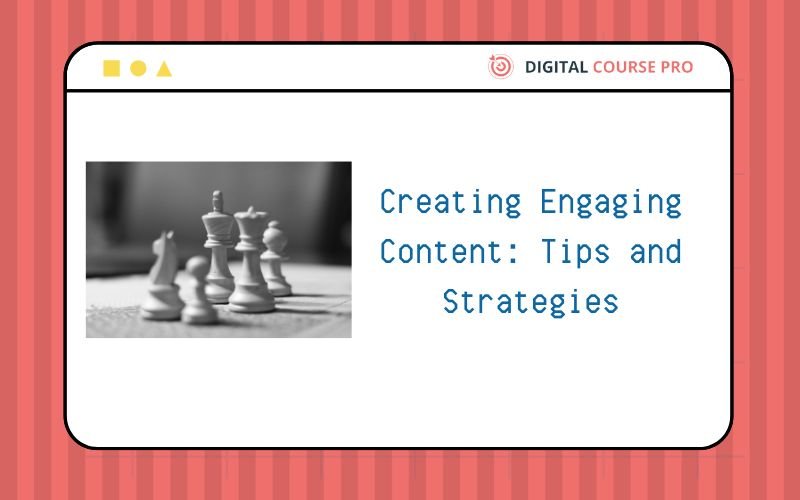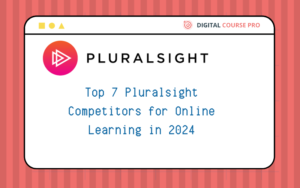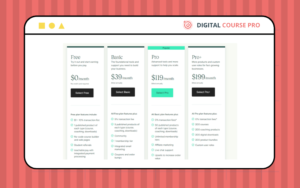Creating Engaging Content: Tips and Strategies is a pivotal module within the “10 Steps to Mastering Simply Passive Digital Marketing Course.” This segment offers essential insights and actionable strategies designed to help you craft compelling content that resonates with your audience. Whether you’re a seasoned marketer refining your approach or a novice looking to learn, this course provides a comprehensive guide to creating content that drives engagement and achieves results. Discover effective techniques, harness the power of storytelling, and optimize your content strategy to elevate your digital presence. Dive into our detailed page to begin mastering the art of creating engaging content today.
Understanding Your Audience
- Identifying Your Target Audience:
Understanding your target audience involves demographic, psychographic, and behavioral analysis to create detailed buyer personas. Tools like Google Analytics, social media insights, and customer surveys help gather data on audience preferences, interests, challenges, and purchasing behaviors. - Creating Audience Personas:
Develop detailed buyer personas that represent your ideal customers, including their age, gender, location, occupation, interests, pain points, and goals. This helps tailor your content and marketing strategies to resonate with specific audience segments. - Audience Research Tools:
Utilize tools such as Facebook Audience Insights, Google Trends, and market research reports to gather valuable insights into audience demographics, interests, online behavior, and trends relevant to your industry.
Crafting Captivating Headlines
- Headline Writing Techniques:
Craft headlines that are clear, compelling, and relevant to your audience’s interests and needs. Techniques include using numbers, asking questions, creating urgency, using power words, and promising value or benefits upfront. - A/B Testing Headlines:
Experiment with different headline variations using A/B testing tools to determine which headlines generate higher click-through rates (CTR) and engagement. Analyze metrics like CTR, bounce rate, and time spent on page to optimize headline effectiveness. - Headline Formulas and Templates:
Use proven headline formulas and templates, such as “How-to” guides, lists (“Top 10”), “Ultimate Guide to,” and “Secrets of” to attract attention and encourage readers to click and explore your content further.
Storytelling Techniques
- The Power of Storytelling:
Storytelling captivates audiences by creating emotional connections and making content more relatable and memorable. Incorporate elements like characters, conflict, resolution, and a narrative arc to engage readers and convey your brand’s message effectively. - Personalizing Your Story:
Share personal anecdotes, customer success stories, or case studies that illustrate how your products or services solve problems or improve lives. Use storytelling to humanize your brand and build trust with your audience. - Visual Storytelling:
Use compelling visual elements such as images, videos, and infographics to enhance your storytelling. Visual content reinforces your narrative, evokes emotions, and increases content engagement and shareability.
Content Formats and Types
- Exploring Content Formats:
Diversify your content strategy by leveraging various formats that appeal to different audience preferences and consumption habits. Formats include:
- Blog Posts: Informative articles, how-to guides, industry insights, and thought leadership content.
- Videos: Tutorials, product demonstrations, behind-the-scenes footage, interviews, and vlogs.
- Infographics: Visual representations of data, statistics, processes, or concepts.
- Podcasts: Audio episodes discussing topics of interest to your audience.
- Social Media Updates: Short-form content, images, videos, polls, and interactive posts tailored to specific platforms.
- Content Repurposing:
Repurpose existing content into different formats to extend its reach and maximize engagement. For example, turn a blog post into a video script or create an infographic summarizing key points from a podcast episode.
SEO Best Practices for Content Creation
- Optimizing Content for SEO:
Improve your content’s visibility in search engine results pages (SERPs) by implementing SEO best practices:
- Keyword Research: Identify relevant keywords with high search volume and low competition using tools like SEMrush, Ahrefs, and Google Keyword Planner.
- On-Page SEO: Optimize title tags, meta descriptions, headings (H1, H2, H3), and content structure for target keywords.
- Quality Content: Create high-quality, informative, and relevant content that satisfies user intent and provides value to your audience.
- Mobile Optimization: Ensure your website and content are mobile-friendly, as mobile usability is a key ranking factor in search engines like Google.
- Internal Linking: Link related content within your website to improve navigation, distribute link equity, and enhance user experience.
- SEO Tools and Analytics:
Use tools like Google Search Console and SEO plugins (e.g., Yoast SEO for WordPress) to monitor SEO performance, track keyword rankings, analyze backlinks, and identify opportunities for optimization.
Visual Content and Multimedia
- Enhancing Content with Visuals:
Visual content (images, videos, infographics) enhances content engagement, improves retention rates, and makes information easier to digest. Use high-quality visuals that align with your brand’s style and message. - Creating Visual Content:
Use graphic design tools such as Canva, Adobe Creative Cloud, and Piktochart to create visually appealing images, infographics, and design assets. Video editing software like Adobe Premiere Pro and Final Cut Pro allows you to produce professional-quality videos for your marketing campaigns. - Optimizing Visuals for SEO:
Optimize image alt text, filenames, and captions with relevant keywords to improve image search rankings and accessibility. Compress images to optimize page load speed and enhance user experience.
Content Calendar and Consistency
- Developing a Content Calendar:
Create a content calendar to plan, organize, and schedule your content publishing schedule. Include key dates, themes, content types, and promotion channels (e.g., social media platforms, email newsletters). - Benefits of Consistent Content:
Consistency in content publishing establishes brand reliability, engages your audience regularly, and improves SEO by signaling freshness and relevance to search engines. - Content Workflow:
Implement a content creation workflow that includes ideation, creation, editing, review, approval, and scheduling. Use project management tools like Trello, Asana, or Monday.com to streamline collaboration and task management.
User-Generated Content
- Harnessing User-Generated Content (UGC):
Encourage your audience to create and share content related to your brand, products, or services. UGC builds social proof, fosters community engagement, and enhances brand authenticity. - UGC Strategies:
Create campaigns or contests that incentivize users to submit photos, videos, testimonials, or reviews showcasing their experiences with your brand. Feature UGC on your website, social media channels, and marketing materials to amplify reach and credibility. - Monitoring and Moderation:
Monitor UGC submissions, engage with participants, and moderate content to ensure it aligns with your brand values and guidelines. Showcase diverse and authentic UGC that resonates with your audience and reinforces your brand narrative.
By implementing these strategies and techniques, businesses can create compelling content, optimize their digital presence for search engines, engage their audience effectively, and build lasting relationships with customers through storytelling and personalized experiences. Creating Engaging Content is a fundamental aspect of successful digital marketing, crucial for capturing and retaining audience attention





